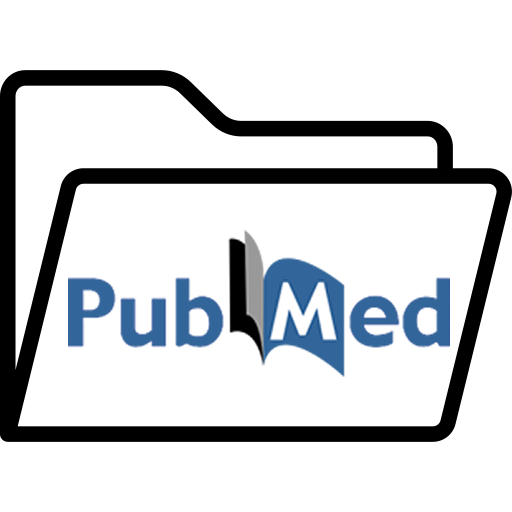Mardin Artuklu Üniversitesi Kurumsal Akademik Arşivi
DSpace@Artuklu, Mardin Artuklu Üniversitesi tarafından doğrudan ve dolaylı olarak yayınlanan; kitap, makale, tez, bildiri, rapor, araştırma verisi gibi tüm akademik kaynakları uluslararası standartlarda dijital ortamda depolar, Üniversitenin akademik performansını izlemeye aracılık eder, kaynakları uzun süreli saklar ve telif haklarına uygun olarak Açık Erişime sunar.

Güncel Gönderiler
A hybrid approach consisting of 3D depthwise separable convolution and depthwise squeeze‑and‑excitation network for hyperspectral image classifcation
(Earth Science Informatics, 12.09.2024) Asker, Mehmet Emin; Güngör, Mustafa
Hyperspectral image classifcation is crucial for a wide range of applications, including environmental monitoring, precision agriculture, and mining, due to its ability to capture detailed spectral information across numerous wavelengths. However, the high dimensionality and complex spatial-spectral relationships in hyperspectral data pose signifcant challenges. Deep learning, particularly Convolutional Neural Networks (CNNs), has shown remarkable success in automatically extracting relevant features from high-dimensional data, making them well-suited for handling the intricate spatial-spectral relationships in hyperspectral images.This study presents a hybrid approach for hyperspectral image classifcation, combining 3D Depthwise Separable Convolution (3D DSC) and Depthwise Squeeze-and-Excitation Network (DSENet). The 3D DSC efciently captures spatial-spectral features, reducing computational complexity while preserving essential information. The DSENet further refnes these features by applying channel-wise attention, enhancing the model's ability to focus on the most informative features. To assess the performance of the proposed hybrid model, extensive experimental studies were carried out on four commonly utilized HSI datasets, namely HyRANK-Loukia and WHU-Hi (including HongHu, HanChuan, and LongKou). As a result of the experimental studies, the HyRANK-Loukia achieved an accuracy of 90.9%, marking an 8.86% increase compared to its previous highest accuracy. Similarly, for the WHU-Hi datasets, HongHu achieved an accuracy of 97.49%, refecting a 2.11% improvement over its previous highest accuracy; HanChuan achieved an accuracy of 97.49%, showing a 2.4% improvement; and LongKou achieved an accuracy of 99.79%, providing a 0.15% improvement compared to its previous highest accuracy. Comparative analysis highlights the superiority of the proposed model, emphasizing improved classifcation accuracy with lower computational costs.
MARDİN MİMARİSİNİN YEREL BASIN ÜZERİNDEN DEĞERLENDİRİLMESİ: MARDİN HABER GAZETESİ
(Astana Yayınları, 2024) Aksoy Işık, Rojat
Dönemin ekonomik koşulları, beşeri faktörler ve topoğrafik durum gibi birçok etmen kentlerdeki mimari oluşum/faaliyet ve yapı üzerinde etkilidir. Kentlerde ortaya çıkan bu mimari oluşum ve faaliyetler sonraki nesillere birer örnek olarak aktarılmaktadır. Bu aktarım sürecinde en önemli kaynaklardan biri de yazılı kaynaklardır. Yazılı kaynaklardan belki de en önemlilerinden biri kentin aynası sayılan yerel yazılı basındır.
Bu bağlamda çalışma için Mardin yerel gazetelerinden biri olan Mardin Haber gazetesi örneği seçilmiştir. Çalışmanın amacı; 2018-2023 tarihleri arasında Mardin Haber gazetesindeki Mardin’deki imar faaliyetleri, planlamaları, uygulamaları, mimari oluşumları incelemek ve değerlendirmektir. Mardin Haber gazetesinin seçilmesinin nedeni, incelenen bu tarihlerde gazetenin kesintisiz basılması ve gazete nüshalarının tamamına erişilebilmesidir.
Çalışma kapsamında, 2018 ve 2023 tarihleri arasındaki gazete arşivlerinden haberler, fiziksel olarak taranıp kayıt altına alınış, kent merkezinde ve ilçelerinde konusu mimarlık, imar, planlama ve uygulama gibi faaliyetlere ilişkin haberler ile kentsel mekân, kentleşme ile ilgili yazılan haberler analiz edilmiştir.
Çalışma sonucunda, Mardin’deki hangi mimarlık faaliyetlerinin seçilen yerel basın gündeminde yer aldığı bulunmuş, mimarlık bağlamında en çok yazılan, haberi yapılan mekânlar ve mimari oluşumlar belirlenmiştir. Elde edilen veriler ışığında günümüzde, o dönem basında yer alan ilgili konular hakkında bir karşılaştırma imkânı bulunmuştur.
Mardin Kent Surları Sınırında Bir Mimari Tasarım Atölyesi
(IKSAD Yayınevi, 26.07.2024) Paköz, Aslıhan Ece
"Ne zaman bir kent anlatsam Venedik'le ilgili bir şeyler söylüyorum" diyen İtalo Calvino gibi, bir kente bakıp onlarca kent görmek mümkün.Kenti ve kentin sınırlarını tanımlamak da bu yüzden zor. Çalışmada, Mardin ve Mardin kent surları aracılığıyla kent ve sınırları üzerine düşünmek ve bu konuyla ilgili hazırlanan bir mimari proje atölyesinden söz etmek amaçlanıyor.
Kapsayıcı Eğitim: Tüm Çocuklar İçin Katılım, Öğrenme ve Gelişim Modeli
(Mardin Artuklu Üniversitesi Yayınları, 2022) Sakız, Halis; Göksu, İdris
Kapalı her sınıf kapısının ardında çeşitliliklerle dolu bir dünya vardır. Bu çeşitliliğin tanınması, kabul edilmesi ve hem okula hem de topluma faydalarının açığa çıkarılması, günümüzde eğitim sistemlerinin farkına vardığı ve erişmeye çalıştığı bir amaç haline gelmiştir. Bu amaca erişmenin en etkili yolu olarak değerlendirilen kapsayıcı eğitim modeli, tüm bireylerin nitelikli ve bütünleştirilmiş eğitimden faydalanabilmesi için hem politika hem de uygulama düzeyinde kabul görmeye başlanmıştır. Dünya genelinde çoğu ülke, eğitim sistemlerinde kapsayıcılığı inşa ederek okulun “tüm çocuklara çeşitli alanlarda gelişim ve öğrenme fırsatlarının sunulduğu” yerler olduğu ilkesini hayata geçirmeye çalışmaktadır.
Son yıllarda kapsayıcı eğitime yönelik vurgunun artmasıyla birlikte bu alanda yapılan bilimsel çalışmaların sayısı ve niteliği de hızlı bir şekilde artmıştır. Kapsayıcı eğitim, gelişmekte olan ve farklı bağlamlar, dönemler ve bireyler açısından tanımlanması ve uygulanması çeşitlilik gösteren bir model olduğundan, bilimsel çalışmaların da kapsayıcı eğitimi çeşitli bakış açıları ile incelemesi mümkün olmuştur. Bu durumun olası bazı dezavantajlarının (örn. bir eğitim sisteminde ortak bir tanım üzerinde uzlaşma güçlüğü) yanında, kapsayıcı eğitimin doğasına uygun olarak bir çeşitlilik içinde ele alınışını sağlamasının, farklı ortam ve zamanlarda, o ortamın ve zamanın koşullarına uygun bir şekilde tanımlanması ve uygulanışı için bir fırsat olabileceği düşünülmektedir. Nitekim kapsayıcı eğitime yönelik tüm bu kavramsallaştırma ve uygulama çeşitliliği içinde herkesin üzerinde uzlaştığı amaç “tüm bireylerin eğitimden faydalanma fırsatlarının artırılması” şeklinde olmuştur. Benzer şekilde bu kitap, okul sistemlerinin tüm çocuklar için açık hale getirilerek tüm çocukların okullarda elde ettikleri yaşantıların kendi gelişim ve öğrenme süreçlerini kolaylaştırması amacıyla okulların hizmet kapasitelerinin artırılmasına yönelik temel bir hedefi benimsemektedir.
Bu kitap, kapsayıcı eğitime ilişkin kavramların, ilkelerin ve uygulamaların bilinirlik düzeyini artırmak ve söz konusu içerikten herkesin faydalanabilmesini sağlamak ve tüm bireylerin rahatlıkla ulaşabilmesi amacıyla açık erişimli olarak yayımlanmıştır. Ayrıca bu kitabın tasarımında görsellik ön plana çıkarılarak ve bazı bölümlerde özetleme yapılarak tüm bireylerin rahatlıkla anlayabileceği bir tasarım benimsenmiştir. Bu çalışmayı hazırlayan akademisyenler ve uzmanlar, tüm okulların bütün çocuklara açık olması ve tüm çocukların nitelikli eğitimden faydalanabilmesi gerektiğine ilişkin akademik, pedagojik ve insani sorumluluk ilkesini benimsemişlerdir. Bu kitaba eğitim uygulayıcılarının, ebeveynlerin, çocukların, akademisyenlerin ve eğitim politikası üretenlerin erişmesi, okuması ve anlam üretmesi hedeflenmiş; çalışma içinde bunun gerçekleşebilmesi için tüm paydaşlar açısından okunabilirliği artıracak bir dil, tasarım ve anlatım kullanılmıştır. Kitap içinde çok sayıda bilgiye yer verilmiş, vurgular yapılmış, görseller kullanılmış, anlatım sadeleştirilmiş, örnekler verilmiş ve önerilerde bulunulmuştur.
Bu çalışmanın içeriği, on beş temayı içerecek şekilde on başlık halinde hazırlanmıştır. Çalışmada ilk olarak Kapsayıcı Eğı̇tı̇mı̇n Mantığı ve İlkelerı̇ başlığı altında kapsayıcı eğitime ilişkin bilgi verilmiş, kapsayıcı eğitimin tanımı, bileşenleri, ilkeleri, dezavantajlı bireyler açısından değerlendirilmesi ve önündeki engellere ilişkin bir içerik sunulmuştur. İkinci ve üçüncü olarak Engellı̇ Bireylerde Eğı̇tı̇m, Öğrenme, Gelı̇şı̇m ve Özel İhtı̇yaçların Ekolojisı̇ ile Engellı̇lı̇ğı̇n Medikal, Sosyal ve Bı̇yoekolojı̇k Modellerı̇ başlıkları altında, günümüze dek eğitim sisteminden dışlanma olasılığı en yüksek bireyler olan engel ile tanılanmış olan öğrencilere ilişkin bir içerik sunulmuştur. Elbette bu kitabın yazarları, kapsayıcı eğitimin örnek öğrenci ve/veya öğrenci grubu hedeflemeksizin okulların tüm çocuklar için yeniden tasarlanması gerektiğini öngördüğünü bilmektedir. Ancak Türkiye’de ve dünya genelinde, özel gereksinimli bireylerin ve bu bireyler arasında engel ile tanılanmış olanların eğitim sistemlerindeki dezavantajlı koşullarının ve kapsayıcı eğitim ile ilişkilendirilmelerindeki kuramsal ve uygulamalı zorlukların devam ettiği dikkate alındığında, onlara ilişkin bilgi içeren bu başlıkların eklenmesinde fayda bulunmuştur. Dördüncü olarak Kapsayıcı Eğı̇tı̇mde Akran İlı̇şkı̇lerı̇ başlığı altında akranlarla beraber bütünleştirilmiş eğitimin faydaları ve akran ilişkilerinin kapsayıcılığa katkısı ele alınmıştır. Beşinci olarak Kapsayıcı Bireysel Eğitim Planı Tasarımı ve Uygulamaları başlığı altında kapsayıcı eğitim bağlamında bireysel ihtiyaçlar, kapsayıcı bir bireysel eğitim planının özellikleri ve bireysel eğitim planının kapsayıcılığının önündeki engeller tartışılmıştır. Altıncı ve yedinci başlıklar olan Öğrencı̇ Merkezlı̇ Sınıf Uygulamaları, Uyarlama ve Düzenlemeler ile İşbı̇rlı̇klı̇ Eğı̇tı̇m, Evrensel Tasarım ve Farklılaştırılmış̧Öğretim içinde sınıf ortamının kapsayıcılığının geliştirilmesine ilişkin detaylı bir içerik sunulmuştur. Sekizinci olarak Kapsayıcı Ölçme, Tanılama ve Değerlendirme başlığı altında, eğitim sistemlerinin en çok tartışılan alanlarından biri olan ölçme, tanılama ve değerlendirmenin kapsayıcı eğitim bağlamında nasıl ele alınıp geliştirilebileceğine ilişkin bir içerik sunulmuştur. Kitabın dokuzuncu başlığı olan Kapsayıcı Rehberlı̇k ve Danışmanlık Pratiklerı̇ içinde okul rehberlik ünitelerinin, tüm çocukların ruh sağlığı ve başarısı için nasıl yeniden yapılandırılıp hizmet verme kapasitelerinin güçlendirilebileceğine ilişkin bir içerik sunulmuştur. Devam eden başlık olan Davranış Gelı̇şı̇mı̇ ve Yönetimı̇ içerisinde davranış süreçleri kapsayıcı eğitim bağlamında incelenmiştir. Takip eden iki bölümde Özel Gereksı̇nı̇mlı̇ Öğrencı̇lerı̇n Sosyal-Duygusal Gelı̇şı̇mı̇ ve Özel Gereksı̇nı̇mlı̇ Öğrencı̇lerı̇n Akademik Gelı̇şı̇mı̇ başlıkları altında başta özel gereksinimi bulunanlar olmak üzere tüm öğrencilerin kapsayıcı eğitim süreçleri içerisinde sosyal-duygusal ve akademik açıdan maksimum düzeyde gelişiminin sağlanması adına bilgilendirici ve yönlendirici bir içerik verilmiştir. Kitapta takip eden on üçüncü, on dördüncü ve on beşinci başlıklar olan Kapsayıcı Eğı̇tı̇mde Aile Temellı̇ Uygulamalar, Çocuk Merkezlı̇ Kapsayıcı Aile Uygulamaları ve Öğrenme Desteğı̇ Sunulması ile Çocukları Desteklemede Aile Katılımı ve İletı̇şı̇m başlıklarında, özel olarak okul sisteminin önemli bir paydaşı olan ailelerin kapsayıcı eğitimdeki rolüne yer verilmiş, ailelerin çocukları desteklemede, okul süreçlerine pedagojik, sosyal ve kültürel açıdan katkıda bulunmada ve toplum kapsayıcılığının düzeyini artırmada üstlenebilecekleri rol detaylı bir şekilde anlatılmıştır.
Can Serum Biomarker Values from Second-Trimester Aneuploidy Screening Predict the development of Retinopathy of Prematurity in Premature Infants?
(Kare Publishing, 2024) Sabancı, Şenol; Küçük, Mehmet Fatih; Savaş, Hasan Basri; Süren, Elçin; Erol, Muhammet Kazım; Yavuz, And; Sipahioğlu, Haydar
Objectives: This study aimed to evaluate serum biomarker values measured during second-trimester aneuploidy screening in terms of their predictive ability for the development of retinopathy of prematurity (ROP) in premature infants.
Methods: This retrospective cohort study evaluated the data of 1985 idiopathic premature infants who underwent ROP screening from 2016 to 2022. The infants were divided into two groups according to the presence of ROP, and those with ROP were further evaluated in two subgroups based on the presence of proliferation. Comparisons were made concerning the serum multiple of the median values of unconjugated estriol (uE3), human chorionic gonadotropin (hCG), and alpha-fetoprotein (AFP) among aneuploidy screening biomarkers.
Results: While 1628 premature infants were in the non-ROP group, 357 were in the ROP group. Of the infants with ROP, 72 were in the proliferative ROP group and 285 in the non-proliferative ROP group. There was no significant difference in the multiple of the median values of the evaluated serum biomarkers (uE3, hCG, and AFP) between the ROP and non-ROP groups or between the proliferative ROP, non-proliferative ROP, and non-ROP groups.
Conclusion: The multiple of the median values of second-trimester aneuploidy screening serum biomarkers were not able to predict the development of ROP in premature infants. This result may have been caused by the fact that the blood tests were taken only once and in the same weeks.




















